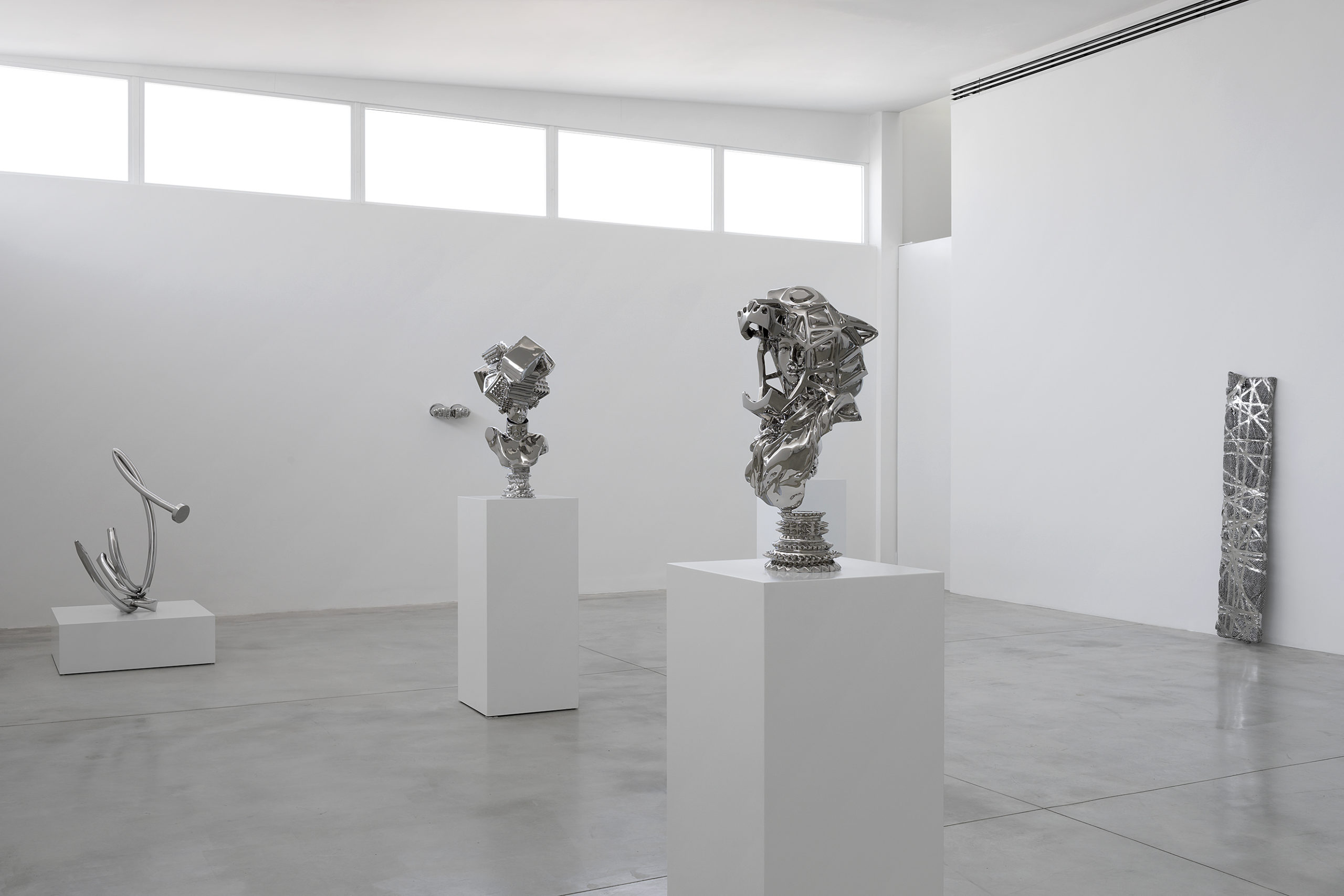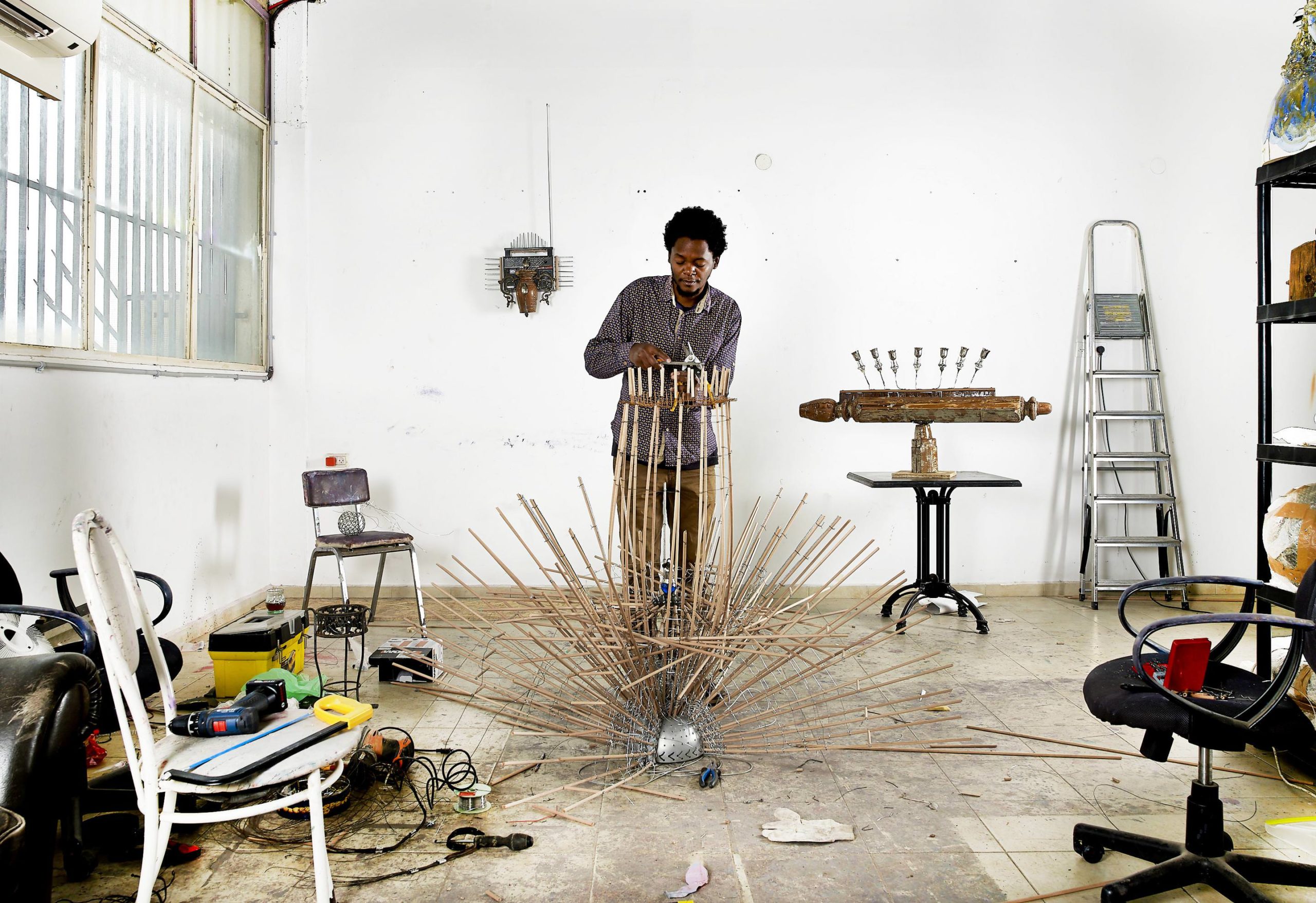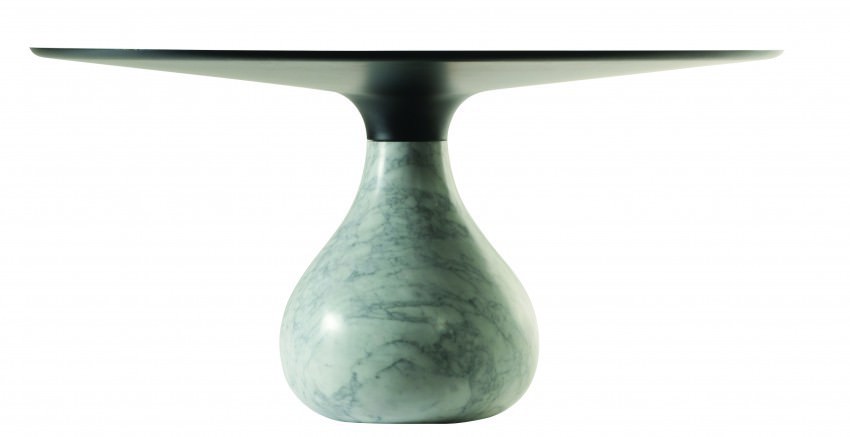This fall, Los Angeles-based artist Joel Morrison delivered a stunning solo exhibition, “Center of the Universe” at the Alon Segev Gallery in Tel Aviv. Over the past decade, the artist has made a name for himself as an exceptional sculptor. Morrison’s stainless steel sculptures examine the acceleration and accessibility of luxury goods in contemporary society, by juxtaposing couture brands with discarded, everyday items.
“Center of the Universe,” which closed November 2, was comprised of nine works, each representing a planet in our solar system as a luxury item. The work drew attention to the appropriation of luxury, and its transition from a cultural statement into a Veblen good. Morrison tactfully merges culture and consumerism, questioning the evolution of high-end fashion, from a work of art into a simple commodity.
Whitewall spoke to Morrison to learn more about “Center of the Universe” and the evolution of luxury.
WHITEWALL: This exhibition is all about blending the high-end and the low-end together. One of your sculptures, “Hold Fast/ Love Bracelets,” showcases tattooed knuckles and love bracelets. How would you describe this piece?
JOEL MORRISON: It’s about what is what is a luxury? What is art? What constitutes taste? And to combine the high and the low into a singular composition is really honest about how I think now. Having been in the art world, which is very intertwined with the fashion world more than before, it’s really honest about what I see everyday and how these things fit together. It’s about taste and style. I’m not degrading the luxury brand but I’m also not kind of elevating the lo-fi. I think those things come together because that’s really who we are. That’s who I am as a person. I came from one place and here I am in another, rather than playing the role of the angry artist from the streets. Both of these things are in my life now.
WW: How does idea of accessibility of luxury materialize in your work?
JM: I think [luxury brands] almost have the same value as collectors. It used to be that fine art was this kind of supreme leader in taste and collectability. It was all about craftsmanship, and as the art world became very global and now there’s art fairs all over the place, artists come and go much quicker. I think this kind of high luxury brand has filled in some kind of a void that is almost equal–not to me because I’m an artist–but in general, to fine art or is really closely related. As art has become more accessible, it’s seen more often with luxury brands and artists are collaborating more with luxury brands. They’re not becoming one, but they’re becoming much more parallel with each other.
WW: This exhibition focuses on space and the universe. How does this concept relate to the message you’re trying to convey?
JM: I thought about this exhibition and was like, “I’m going pick out nine planets, and they’re all going to tell a story about us thinking we’re at the center of the universe.” That’s a cool concept and each work you know roughly covers it, but it’s a very human exhibition about us and how we discover something or we create something, and at that moment we think somehow we’re at the center of the universe. And the humbling fact is that nope, we’re all replaceable and there is no center of the universe. Everything has a history, and we’re not at the center of it. So it’s a nice metaphor for humility, but also the raw reality of the fact that we’re all a little bit narcissistic.
WW: Are there any symbols or metaphors you wanted to incorporate into each sculpture?
JM: I thought about each planet. Even though the work is very formally made and obviously refined, concept always comes first. I always think about a concept or an idea, and then that leads to the piece. So I thought that the funniest one, that may or may not be one of the nine planets, Pluto. It’s a just a ball of ice way out on the fringes of the universe that kind of gets ignored. I was like ok, ice, ice, ice, ice. I was at a friend’s house flipping through a gossip magazine and saw a picture of Jay-Z with this huge Cartier Panther ring that’s completely diamonded-out. Well in American culture or hip-hop culture, that’s considered “iced out.” So I said, “Perfect, that’s the piece.” So I found that Cartier Panther ring and blew it up and even carved diamonds out of steel and put it in the eyes of this ring.
WW: What message would you like to communicate to your audience?
JM: I think that each work is slightly different, but by combining objects that people know with things that people don’t know about like references to planets or global politics, they start talking about it. And once they’re kind of getting into the door of the conversation and take enough time to really look at the piece or read about it, then boom. They’re able to be engaged and create their own story with their experience of how they view art, how their life has changed, or how we evolve as a people, whether that’s good or bad.










